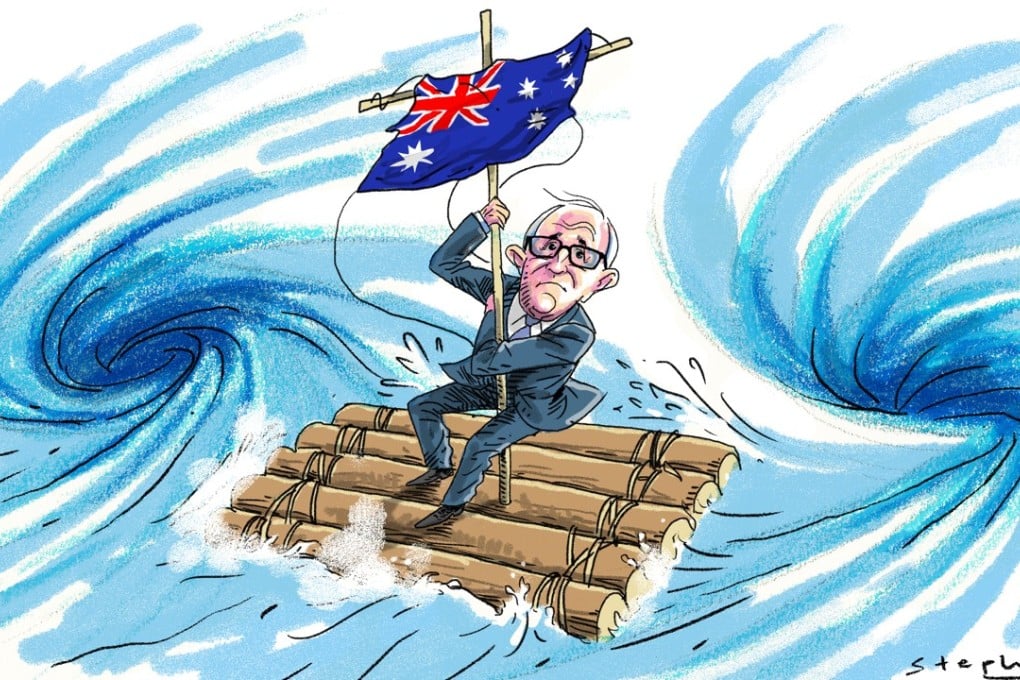Advertisement
Why Australia should refrain from challenging China with gunboat diplomacy in the South China Sea
Mark J. Valencia says Australia, caught between China and the US, is flip-flopping on freedom of navigation operations in the South China Sea. However, threatening China’s territorial claims would be counterproductive
Reading Time:4 minutes
Why you can trust SCMP
0

Analysts’ eyes have been focused on the recent visit of the US aircraft carrier Carl Vinson to Da Nang, Vietnam. This first visit of a US carrier to Vietnam since 1975 sent a warning to China regarding its “militarisation” of features in the South China Sea. Now, waiting in the wings are possible freedom of navigation operations by the United Kingdom and Australia.
From a American strategic perspective, this would be an ideal time for such operations, with the Vinson able to provide back-up if trouble ensued. Indeed, this would give the impression that the US has successfully rallied its allies vis-à-vis China.
However, it appears that Australia may have stepped back from the brink of a bottomless pit in its relations with China. While Australia certainly supports freedom of navigation, it may be thinking better of undertaking a freedom of navigation operation specifically challenging China’s claims in the South China Sea. It was clearly contemplating mimicking or even joining the US in its challenges to China’s sovereignty over certain low-tide features or its requirement of prior permission for warships to enter its territorial seas. To refrain from doing so would enhance its relations with China, but strain those with the US.
Australia’s balancing act between US and China will prove one of its greatest challenges
The US has declared China a “revisionist power” that wants to change the US-led “international order”. It has also declared China a “strategic competitor”, sending a clear message to China as well as to US allies like Australia.
Indeed, its 2018 National Defence Strategy calls for expanding and transforming Washington’s network of alliances and partnerships in the Asia-Pacific in to a “networked security architecture”. So US pressure on Australia to do more to support the US strategy to contain China has been mounting.
An Australian move targeting China’s claims would send an unmistakable political signal that Australia is siding with the US
Australia used similar rhetoric in its 2017 white paper on foreign policy. It characterises the South China Sea disputes as “a major fault line in the regional order”. The white paper also proclaims Australia’s intention to “conduct cooperative activities with other countries consistent with international law”. Julie Bishop, Australia’s minister of foreign affairs, explained that “what we are seeking to do is to balance against bad behaviour. The key is a rules-based order”. Meanwhile, its Chief of Navy Tim Barret called for concrete action against China’s navy in the South China Sea. This gave the impression that Australia was seriously considering joining US freedom of navigation operations or undertaking its own.
Such an Australian move targeting China’s claims would send an unmistakable political signal that Australia is siding with the US to uphold the existing, largely Western-built “international order”. But it could well be the straw that breaks the back of Australia-China relations and sends them into a tailspin. According to Michael Green, a former security adviser to the US government: “In a strategic sense, it [an Australian freedom of navigation operation]would be a demonstration of willpower and solidarity.” Indeed, that is exactly how China is likely to see it.
Advertisement